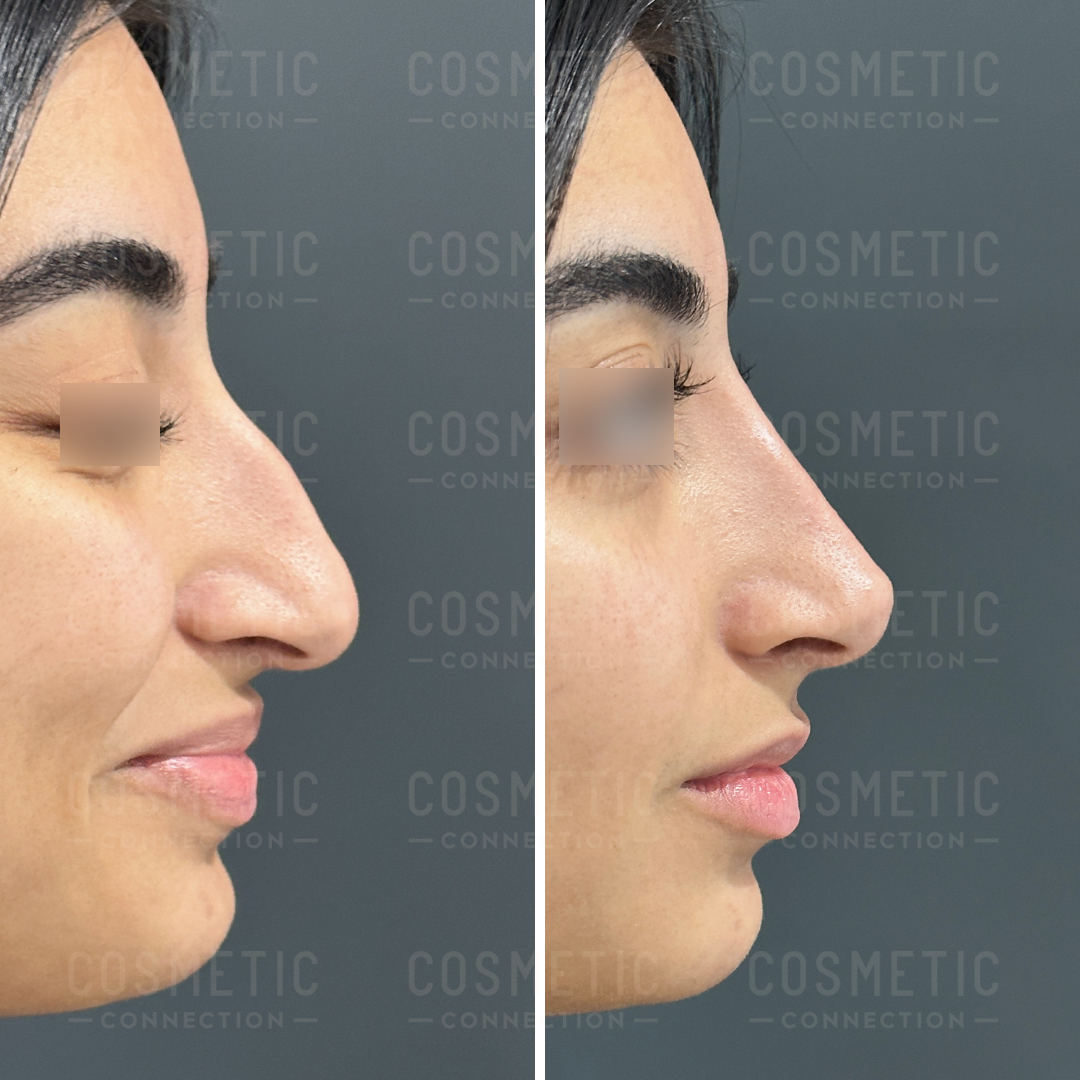So, you want to change the appearance of your nose and researching your options. One of the key decisions you need to make is whether to reshape your nose with surgery, or choose non-surgical approaches. But it can be a tough decision to make.
Here, we will break down the most important things you must consider before deciding between a surgical nose job and a non-surgical rhinoplasty.
What is a non-surgical rhinoplasty?
A non-surgical rhinoplasty is a non-invasive treatment that uses various methods to change the shape of your nose. Treatments typically take 10-20 minutes, and have short recovery periods, characterised by mild redness and swelling which typically settles in days for most people. These options do not change the underlying structure of your nose, and provide temporary results.
What is a surgical rhinoplasty?
A surgical rhinoplasty (nose job) is an invasive treatment that changes the appearance of your nose by altering the underlying bone and cartilage structure.
It gives a permanent result, but generally has higher cost, more risk and longer recovery time than non-surgical options.
Importantly, surgery does not stop your nose changing with age, and so the result you get is not the result you will have forever.
Things to consider when deciding between nose job surgery and a non-surgical rhinoplasty
Cost
- Non-surgical rhinoplasty will typically cost $1000-$1500 per treatment depending on the experience and skill of the provider.
- Surgical rhinoplasty typically costs $20,000-$30,000 depending on the surgeon you choose.
Risk
- Non-surgical rhinoplasty risks include infections and reactions to the various methods.
- Surgical rhinoplasty has risks that include bleeding, infections, breathing difficulties, and aesthetic deformities. There’s also the risk of general anaesthetic.
Downtime
- The non-surgical rhinoplasty has short recovery periods, with some slight limitations on activity (you need to take it easy for 24 hours, and avoid pressure on your nose for 5 days).
- Surgical rhinoplasty has longer downtime. Most people take 2 weeks off work, and swelling can persist for weeks to months.
Results
- Non-surgical rhinoplasty can address many concerns people have about their nose. It can camouflage bumps, lift and refine a droopy nose tip, and straighten natural crookedness. However there are limitations in how much change is possible.
- Surgical rhinoplasty can address almost all aesthetic concerns you may have about your nose.
Longevity
- Results from a non-surgical rhinoplasty wear off over time, typically over 12-24 months.
- Results from surgery are permanent, however your nose continues changing as you age.
Book your consultation now
Do many people regret their surgical rhinoplasty?
Some studies quote dissatisfaction rates of over to 40% after surgical rhinoplasty.
Revision rates may be around 10%.
Is a non-surgical rhinoplasty better than a surgical rhinoplasty?
There are many variables to consider when deciding whether the non-surgical rhinoplasty is better than surgery. It is a personal decision that must be made after considering the cost, risk, downtime, longevity and permanency of the procedure. A detailed consultation is also critical and always forms part of the decision making process.

